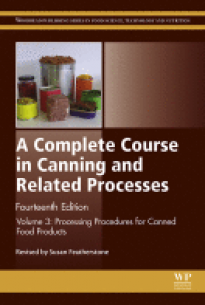Canning
Canned fish are an important food source. Canned fish are rich in protein and many other essential nutrients, and can be a good source of omega-3 fatty acids. Many different types of sea creatures are canned, including fish, molluscs, and crustaceans. Canned fish are processed and sealed in a hermetic container such as a can, and subjected to heat. Generally, the shelf life of canned fish ranges from 1 to 5 years.
The canning process generates by-products such as head, bone, skin and viscera. Traditionally, this is not wasted and it is processed to produce fish meal and fish oil. Tuna canning also generates dark meat, which is often used for pet food.
Various factors can lead to the rejection of canned products and hence food loss and waste (FLW):
- Processing of poor quality raw material
- Formation of struvite crystals (magnesium ammonium phosphate crystals)—Generally any struvite crystal greater than 5 mm in length is declared unacceptable
- Black iron sulfide staining (smut)—Staining affecting greater than 5% of the sample unit is generally unacceptable
- Undesirable parts—Any parts from which the heads, gills, shell, viscera, or cartilage have not been removed and that exceed a prescribed amount
- Honeycombing (usually found in tuna)—flesh showing evidence of pitting, either on the surface or between the layers of fish flesh.
- Breakdown of texture—softening or grittiness of the texture, or rubberiness and excessive toughness.
- Presence of foreign matter
- Foreign, uncharacteristic, or off odours and colours
Key Publications
|
A description of canning processes for various fish and seafood products. | |
|
The provides a background to the principles of canning and to the specification and construction of containers for the sterilization of fishery products. |
More Resources
More Resources
27 February 2024
31 October 2023
05 September 2023













